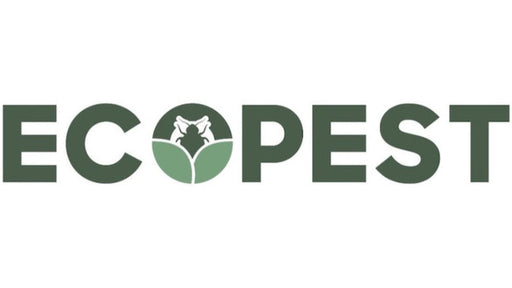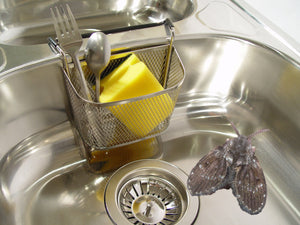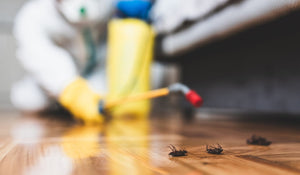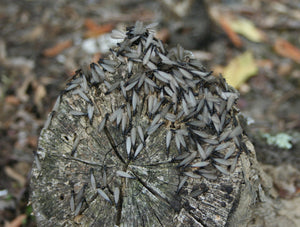
In this article, we are going over the proven methods to maximize the effectiveness of fly control products and help you make an informed decision easier.
Flies may seem annoying, but they can actually pose serious health risks and disrupt your overall quality of life. That's why effective fly control is crucial for maintaining a clean and hygienic environment. In this article, we'll emphasize the importance of fly control and share strategies that have stood the test of time.
Understanding Fly Behavior and Lifecycle
First things first, let's understand fly behavior and lifecycle. Flies are attracted to rotting organic materials and dirty surroundings. They go through different stages of life, starting as eggs, then hatching into larvae (maggots), and eventually emerging as adult flies. This lifecycle can be completed in just a week, which means a small number of flies can quickly turn into a major infestation if not dealt with promptly.
Understanding the Challenges of Fly Infestation
Fly infestations come with their fair share of challenges. Flies can carry and spread diseases, contaminating food, surfaces, and utensils. This poses health risks and can lead to foodborne illnesses. Moreover, fly infestations can harm businesses like restaurants, food processing plants, and livestock operations.
Identifying the Most Effective Fly Pest Control Products
When it comes to choosing fly control products, there are various options available, each with its own pros and cons. You have fly baits, traps, pesticides, and electronic control systems, to name a few. Consider factors such as the severity of the infestation, the specific fly species, the environment, and safety concerns.
It’s always a good idea to choose eco-friendly and safe solutions. This way you can deal with the pesky flies and other insects without jeopardizing your health and the health of your family.

Tips for Maximizing the Effectiveness of Fly Pest Control Products
It is critical to develop a strategic fly control plan in order to maximize the effectiveness of fly control products. Identifying problem areas, deciding the proper type and number of control products required, and executing a consistent application and monitoring approach are all part of this process.
Here are a couple of tips for maximizing the effectiveness of fly pest control products:
Location - Given fly flight patterns and attractants, proper placement of fly control products is critical. If you are using sticky fly traps it’s best to place them in areas where flies usually hang out. This could be your kitchen windows or near the front door. This way you will capture most of the flies coming into your home and prevent larger infestations.
Monitoring - Control measures must also be monitored and adjusted on a regular basis to maintain long-term efficacy. Change your glue traps on a regular basis or when they get full. If you notice the traps have a lot of flies on them consider adding an additional one in high-frequency areas.
Maintaining Cleanliness for Enhanced Fly Control
Maintaining cleanliness is key to enhanced fly control. Regularly clean and sanitize areas where flies are commonly found, like garbage cans, sewers, and outdoor spaces. Proper waste disposal, efficient garbage management, and keeping environments clean and dry all contribute to reducing fly attraction and infestation.

Implementing Integrated Pest Management (IPM) Techniques
Integrated Pest Management (IPM) is a comprehensive method that incorporates several strategies to efficiently manage pest populations.
IPM approaches can be combined with the usage of fly management products when it comes to fly control. This includes taking preventative measures such as closing entry points and building physical barriers, as well as employing biological control agents such as parasitic wasps and predators. The use of chemical-based control products can be reduced by using an IPM method.
Harnessing Natural and Non-Toxic Fly Control Methods
Natural and non-toxic fly control solutions can be beneficial for individuals looking for alternatives to chemical-based items.
Among these are the use of essential oils with insect-repellent characteristics, such as citronella, lavender, and eucalyptus. Fly traps that use vinegar or fruit-based baits can also attract and collect flies without the use of toxic chemicals. While alternative treatments can be beneficial, their performance varies and they might not entirely eliminate a fly infestation.
Educating and Training Personnel for Effective Fly Control
Personnel education and training are critical for effective fly control.
Employees should understand the significance of fly prevention and be familiar with the proper usage and application of fly control products. Training programs can address issues including finding fly breeding places, recognizing indicators of infestations, and putting preventive measures in place. Personnel who are well-informed and trained are better suited to contribute to a fly-free environment.
Regular Maintenance and Inspections
Regular maintenance and inspections are essential to ensure the long-term effectiveness of fly control solutions. Establish a maintenance schedule to empty and clean fly traps regularly, refill fly baits, and ensure electronic devices are functioning properly. Regular inspections allow for early detection of fly issues, enabling quick intervention to prevent infestations from spreading.
Conclusion
To sum it up, maximizing the effectiveness of fly control products requires a comprehensive approach. By understanding fly behavior, developing a strategic plan, maintaining cleanliness, implementing IPM techniques, exploring natural alternatives, educating personnel, and conducting regular maintenance and inspections, you can create a fly-free environment.
Remember, effective fly control is an ongoing commitment to hygiene and preventive pest management. So, put these strategies into action and enjoy a fly-free space!

FAQs
Q1. What are the most effective fly control products available in the market?
There are various efficient fly control products on the market that can assist in combat fly infestations. The most appropriate product is determined by the unique situation, the degree of the infestation, and the desired level of control.
The following are some of the most widely used and successful fly control products:
Fly Baits: Fly baits use food-based lures or pheromones to attract flies. Flies eat the bait and are then eliminated when they come into touch with it. Fly baits come in a variety of forms, including grains, liquids, and gels.
Fly Traps: The traps are designed to attract and capture flies by various means. Sticky traps, also known as glue traps, are coated with a sticky substance that captures flies when they land on them. Jar traps attract flies with bait and have small holes that enable flies to come in but prevent them from escaping. UV light traps lure flies with light and then trap them using an electric grid or an adhesive surface.
Insecticides: Specific insecticides for fly control can be useful in reducing fly populations. These products come as sprays, aerosols, and dusts and can be used both indoors and outdoors. It is critical to use insecticides designated for fly control and to follow the application instructions exactly.
Electronic Fly Control Devices: UV light is used to attract flies in electronic fly control devices such as fly zappers or bug zappers. When flies come into touch with an electrified grid, they are instantly destroyed. These devices are often used in outdoor settings, but they can also be employed in some situations indoors.
It is important to remember that the efficacy of these remedies varies based on factors such as fly type, infestation size, and environmental circumstances. For precise product suggestions based on your unique scenario, it is recommended that you talk with a pest control professional.
Q2. How do I choose the right fly control product for my specific needs?
Choosing the best fly control product for your needs requires careful evaluation of a number of criteria.
Here are some crucial aspects to consider before making a decision:
- Identify the fly species
- Assess the severity of the infestation
- Consider the best area to apply the treatment
- Follow the instructions and safety measures
- Consider eco-friendly solutions
- Choose the right product based on reviews and recommendations
- Call the professional pest control
By taking all of this into account, you can make an informed choice and select the best fly control product for your specific needs. Remember to carefully follow the product's instructions for the best results and safety.
Q3. What factors should I consider when choosing fly control products?
A number of factors should be covered when selecting fly control products to ensure their effectiveness and compatibility with your unique needs. Consider the following important factors:
Species: Different fly species have different behaviors and preferences. Determine which fly species are causing the infestation, as certain products may be more successful against specific species. Because certain solutions target specific fly species, selecting the appropriate product can improve control outcomes.
Infestation Severity: Determine the extent of the fly infestation. Simple and less aggressive control tactics, such as fly traps or baits, can be sufficient for minor infestations. Larger or persistent infestations, on the other hand, might require tougher measures such as insecticides or professional pest control services.
Effectiveness: Determine the product's effectiveness against flies. Look for products with a track record of success and positive consumer feedback. Consider the active components, method of action, and efficacy rates of the product. Reliable and well-known brands can frequently deliver more effective solutions.
Ease of use: Consider the product's ease of use. Some fly control products have easy setup and positioning requirements, while others may have more complex installation or application procedures. Choose pest control products that correspond to your level of comfort and skill.
Long-Term Control: Determine whether the product gives temporary relief or long-term control. Some products can help the present fly problem but do not prevent future infestations. Look for solutions that not only kill existing flies but also have lasting impacts that discourage re-infestation.
Budget: Consider your financial limitations. Fly control products fluctuate in price, so decide how much you're willing to spend while considering the product's effectiveness and quality. It is critical to find a balance between cost and effectiveness.
Q4. Can I use multiple types of fly control products simultaneously?
Yes, it is frequently possible, and even suggested, to use numerous types of fly control solutions at the same time.
Combining several fly control strategies can improve the overall effectiveness of your fly control approach. However, it is critical to examine product compatibility and verify that their simultaneous use does not jeopardize their effectiveness or present any safety issues. While using different types of fly control solutions might be beneficial, it is critical to create a balance and avoid overdoing it. Using too many products at the same time may result in overcrowding or confusion, diminishing the effectiveness of any specific approach. When determining the optimal product combination, consider the degree of the infestation, the individual fly species, and the size of the area to be treated.
If you have any questions or concerns, it is always best to consult with a pest control professional who can provide personalized advice depending on your specific situation.
Q5. Are fly control products safe for humans and pets?
Many fly control products on the market are designed to be safe for humans and pets when used according to the manufacturer's recommendations. However, it is critical to exercise caution and adhere to safety guidelines in order to reduce any potential risks.
Here are some things to think about:
Examine the Labels: Read the instructions and precautions on the product labels carefully. The labels offer critical information regarding the product's correct usage, application, and safety concerns.
Keep Products Away from Children and Pets: Keep fly control products out of the reach of children and pets. To avoid unintentional consumption or exposure, follow the manufacturer's storage and handling instructions.
Use Pet-Safe Fly Control Products: If you have pets, look for fly control products that are labeled as safe for use around animals. Some items are expressly designed to be pet-friendly, with low toxicity or minimum impact on pets.
Avoid Food Contamination: Take steps to avoid contamination when using fly control products in or near places where food is made or eaten. To maintain a safe and sanitary environment, keep the products away from food surfaces and ensure proper cleaning and sanitization.








